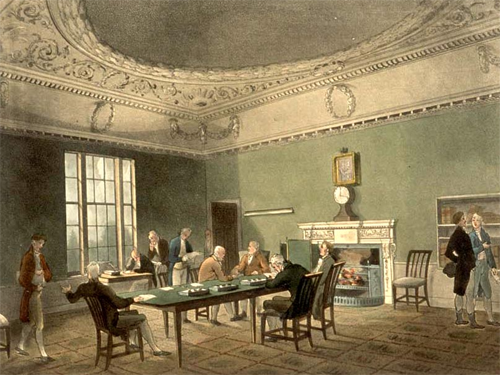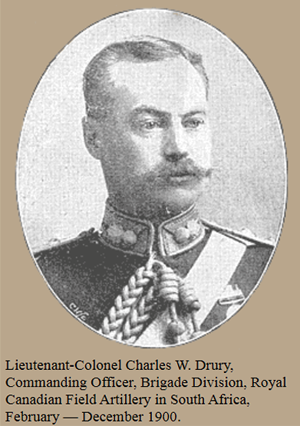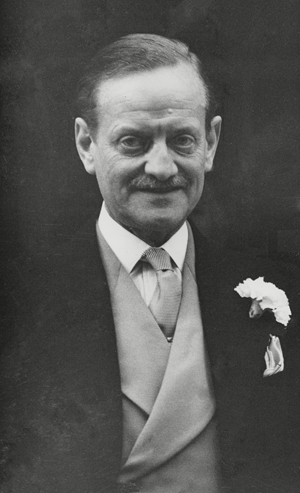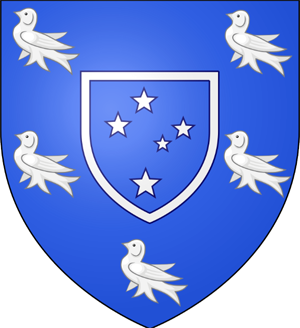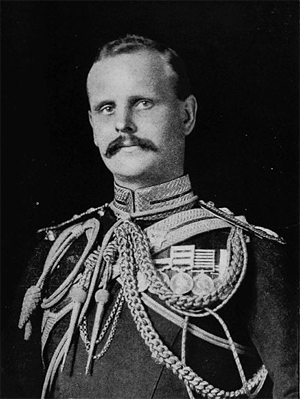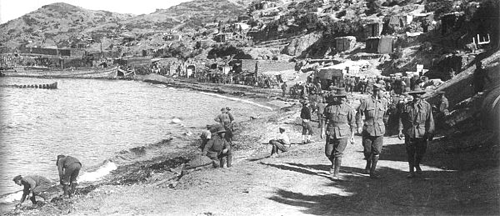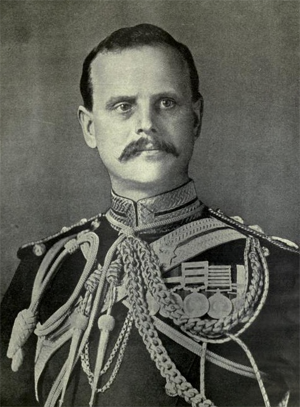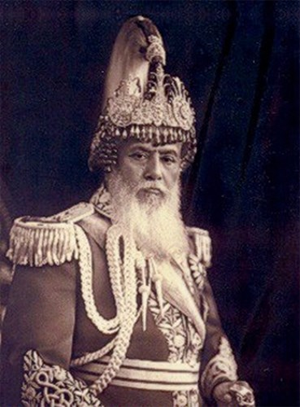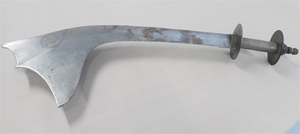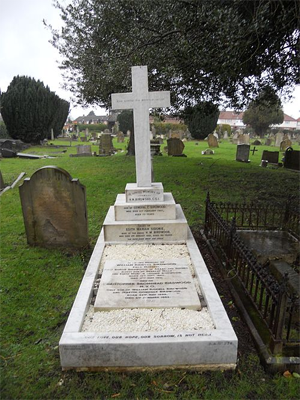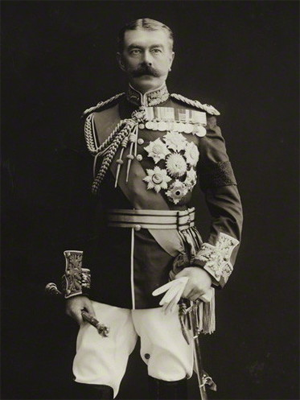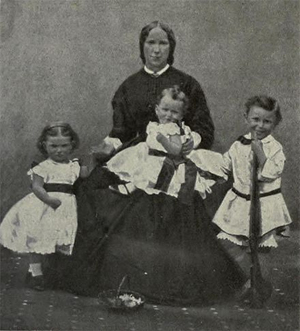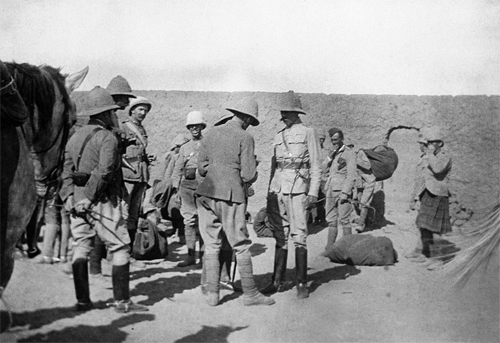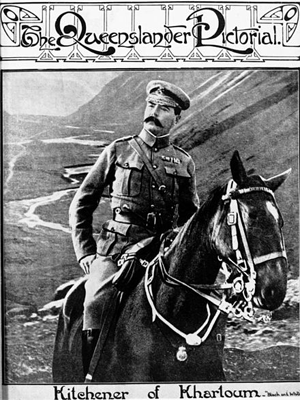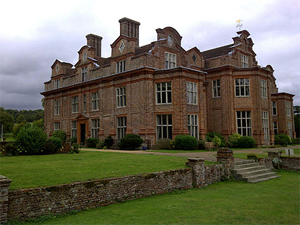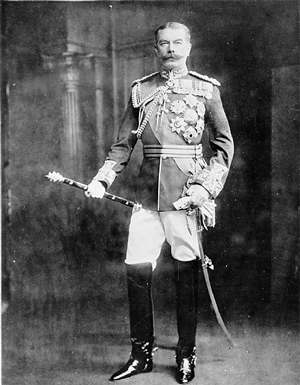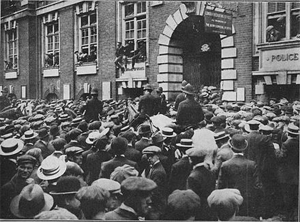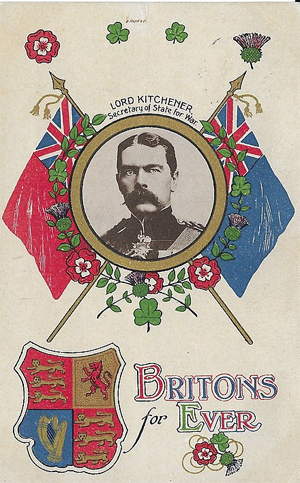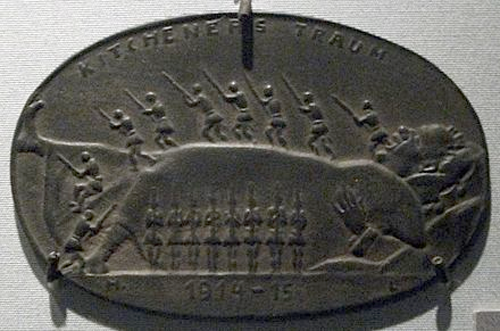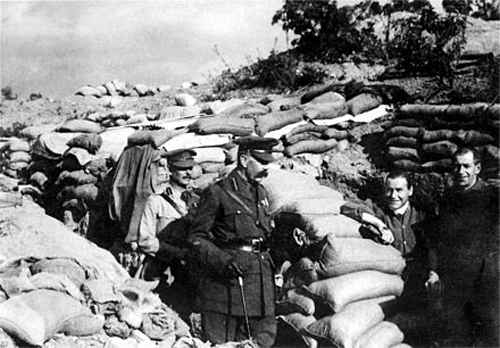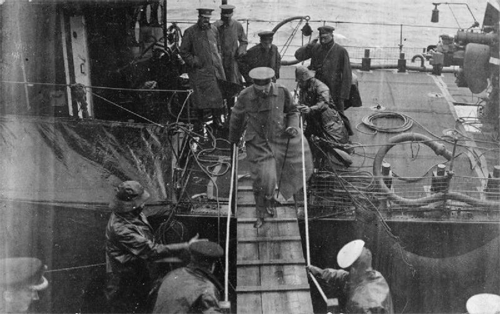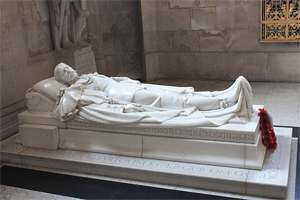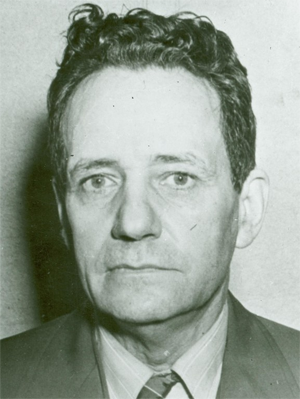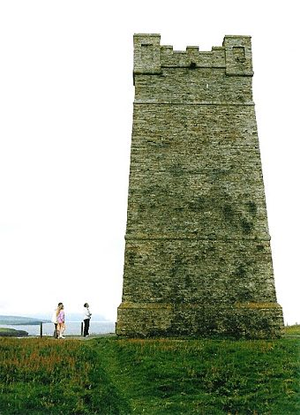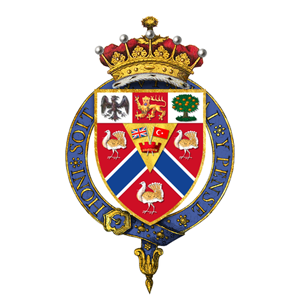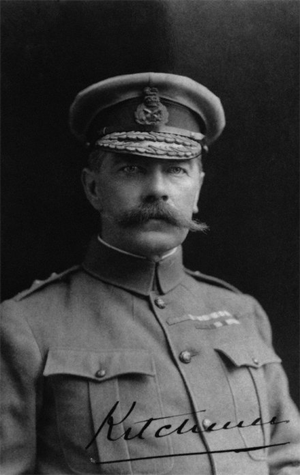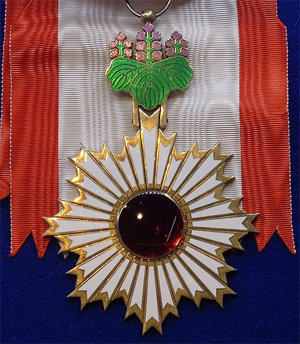Part 2 of 2
See also• Order of Civil Merit (Korea)
• Order of Chula Chom Klao and Order of the White Elephant (Thailand)
• Order of St. Michael and St. George (UK)
• Legion of Honour (France)
• Order of Merit of the Federal Republic of Germany (Grand Merit Cross, Merit Cross and Merit Medal equivalents)
• Order "For Merit to the Fatherland" (Russia)
• Order of Isabella the Catholic (Spain)
• Order of Merit of the Italian Republic
• Decoration of Honour for Services to the Republic of Austria (Grand Decoration in Gold with Sash, in Gold with Star, in Gold, Grand Decoration of Honour, Decoration of Honour in Gold, Decoration of Merit in Gold)
• Order of Prince Henry (Portugal)
Notes1. "Decorations Bureau web site". CAO. Retrieved 5 November 2011.
2. "Council of State decree". Quan online. Retrieved 5 November 2011.
3. Embassy of Japan in Australia Archived 21 July 2011 at Archive.today
4. Orders of the Rising Sun Cabinet Office
5. Grand Cordon of the Order of the Paulownia Flowers Cabinet Office
6. "Weatherhead East Asian Institute web site - Carol Gluck". Columbia University. 1 May 2006. Retrieved 5 November 2011.
7. Honor awarded 1929: "Japanese Emperor Honors H.W. Taft; Consul-General Gives Insignia for Fostering International Friendship. Diploma Also Presented; Brother of Chief Justice Receives Order of Rising Sun at Exercises Here," New York Times, 28 June 1929.
8. "No. 32201". The London Gazette (Supplement). 18 January 1921. p. 572.
9.
http://www.iraq.emb-japan.go.jp/Press_R ... 60429e.pdf10. [1] Archived 2 May 2014 at the Wayback Machine
11. "2007 Autumn Conferment of Decorations on Foreign Nationals" (PDF). Ministry of Foreign Affairs. 8 November 2007. Retrieved 30 November 2015.
12. aka Luang Pradist ManudharmPridi Banomyong (1974). Ma vie mouvementee et mes 21 ans d'exil en Chine populaire (in French). UNESCON.
13. "No. 32428". The London Gazette (Supplement). 19 August 1921. p. 6569.London Gazette issue 32428, 19 August 1921
14. Rutledge, Martha. (1979). "Barton, Sir Edmund (1849–1920)," Australian Dictionary of Biography,Volume 7, pp 194–200; Scaramouche. "Sir Edmund Barton" Archived 20 July 2008 at the Wayback Machine
15. Nagashima-Hayashi, Michiko. "Former UNICEF Executive Director receives humanitarian award in Japan," UNICEF web site (2006)
16. British Library. "Handlist of Japanese Manuscripts Acquired Since 1984," 'Or. 14819 Certificate conferring Order of the Rising Sun on Admiral von Bendemann,' p. 3.
17. "Ambassade du Japon en Algerie".
www.dz.emb-japan.go.jp.
18. "First Hawaiian Bank Annual Report, page 15 "Bishop is later awarded the Grand Cordon of the Imperial First Order of the Rising Sun by Japanese Emperor Meiji"" (PDF).
www.bancwestcorp.com.
19. FIFA: Honors, Sepp Blatter Archived 12 June 2009 at the Wayback Machine.
20. "2009 Spring Conferment of Decorations on Foreign Nationals" (PDF). Ministry of Foreign Affairs of Japan. Retrieved 4 March 2012.
21. Dr. Sydney Brenner, Former OIST Promotion Corporation President, Receives Grand Cordon of the Order of the Rising Sun Okinawa Institute of Science and Technology Graduate University, 22 Aug 2017
22. apan Today Archived 5 June 2011 at the Wayback Machine
23. "U.S. Navy History". 6 February 1997. Archived from the original on 6 February 1997.
24. "Army chief of staff receives 'Order of the Rising Sun' decoration during Japan visit". The United States Army. 23 December 2010. Retrieved 5 November 2011.
25. "In Brief", The Nation, archived from the original on 3 June 2013, retrieved 25 February 2012
26. "Helen Clark decorated with top Japanese honours for diplomatic work". Stuff. 19 December 2017.
27. Former Administrator, UNDP
28. "2009 Autumn Conferment of Decorations on Foreign Nationals, Ministry of Foreign Affairs of Japan" (PDF).
29. "Embassy of Japan in the UK".
www.uk.emb-japan.go.jp.
30. "Cidadãos nacionais agraciados com ordens estrangeiras". Ordens Honoríficas Portuguesas. Retrieved 13 July 2016.
31. Japan Today[dead link]
32. "Bob Hawke receives top Japanese honour". AustralianAssociatedPress. 20 March 2012. Retrieved 8 August 2019.
33. "Conferral ceremony for Grand Cordon of the Order of the Rising Sun upon the Honourable John Winston Howard OM AC, former Prime Minister of Australia". Embassy Events. Embassy of Japan in Australia. Retrieved 21 December 2013.
34. Kirkup, James. "Obituary: Masaru Ibuka," Independent (London). 22 December 1997.
35. Daniel Inouye, Senate: Awards Archived 7 October 2010 at the Wayback Machine
36. Honor conferred 1917: "No. 30363". The London Gazette (Supplement). 30 October 1917. p. 11322.
37. "Japan to confer award on former DPM Jayakumar". ChannelNewsAsia. Retrieved 29 April 2012.
38. Mauritius Consulate, Malta: Anerood Jugnauth Archived 2 June 2010 at the Wayback Machine
39. Foreign honours recipients 2014 - website of the Ministry of Foreign Affairs of Japan
40. "NEWS REPORT:Campus Now:WASEDA ONLINE".
www.yomiuri.co.jp.
41. "The Marquess Komura; A Notable Career," The Times (London). 25 November 1911.
42. PM Lee receives top Japanese honour on behalf of Lee Kuan Yew Channel Newsasia,28 Sep 2016
43. พระราชทานเหรียญดุษฎีมาลา, เล่ม ๑๗,ตอน ๑๘, ๒๙ กรกฎาคม พ.ศ. ๒๔๔๓, หน้า ๒๑๔
44. Lee Kuan Yew Bio Archived 26 September 2008 at the Wayback Machine
45. Honor awarded December 6, 1964: LeMay, Curtis E. (1965). Mission with LeMay: My story, p, 466.
46. Embassy of the Republic of Kenya in Japan: Wangari Maathai, 2009.
47. "General Orders, No. 13" Archived 3 November 2013 at the Wayback Machine. Department of the Army, Headquarters. 6 April 1964. Retrieved 1 March 2010.
48. "2018 Spring Conferment of Decoration on Foreign Nationals" (PDF). Ministry of Foreign Affairs of Japan. Ministry of Foreign Affairs of Japan. Retrieved 22 September 2018.
49. C. J. Lloyd. McEwen, Sir John (1900–1980). ADB. Retrieved 5 November 2011.
50. Honor awarded 1973: National Archives of Australia Archived 20 May 2009 at the Wayback Machine
51. "Secretary Norman Y. Mineta Papers".
www.oac.cdlib.org. Retrieved 17 February 2018.
52. "Japan to honour Amina Mohamed for splendid work".
53. Embassy of Japan
54. Ambassador and former Foreign Minister of the Republic of Serbia H.E. Mr. Ivan Mrkić conferred Grand Cordon of the Order of the Rising Sun in Japan
55. Garamone, Jim. "Pace Receives Japanese Emperor's Rising Sun Award", American Forces Press Service. 18 August 2007.
56. 2017 Autumn Conferment of Decorations on Foreign Nationals, Embassy of Japan in Australia, 3 November 2017
57. Stamford alumni: William Perry bio; "4,632 people win awards for contributing to Japan," Japan Times, 3 November 2002.
58. Niewalda, Marcin. "Lista WSZYSTKICH odznaczeń Józefa Piłsudskiego".
www.genealogia.okiem.pl.
59. "Biographies : GENERAL EDWARD A. RICE JR". The US Army. Archived from the original on 18 July 2012. Retrieved 5 November 2011.
60. "訃報(経団連名誉会長、当社社友名誉会長 斎藤英四郎殿)[News of death: President Emeritus of Keidanren, Honorary Chairman of our company, Saito Eishiro]". Nippon Steel. Retrieved 22 June2019.
61. MCADCafé: "Dr.Shoichiro Toyoda To Receive SAE Foundation's 2005 Manufacturing Leadership Award," PR Newswire. 15 March 2005.
62. Saing Soenthrith (5 November 2013). "Japanese Government Awards Chea Sim Order of the Rising Sun". The Cambodia Daily. Retrieved 31 May 2014.
63. Kumar, Ajith Vijay (5 November 2014). "Former PM Manmohan Singh receives Japan's top national award". Retrieved 30 November 2015.
64. "Stowarzyszenie Wspólnota Polska".
www.wspolnota-polska.org.pl. Archived from the original on 9 June 2015.
65. Kurita, Shunjiro. (1930). Who's Who in Japan, Vol. 13, p. 40; Cambridge University Alumni 1261–1900
66. Honor awarded 1908: Ibaraki Prefecture e-newsletter Archived 2 December 2007 at the Wayback Machine
67. S Ramesh. "Goh Chok Tong to receive award from Japanese emperor". Channelnews Asia. Retrieved 24 October 2011.
68. "The Japanese Government honours Sir John Whitehead". Embassy of Japan in the UK. 1 May 2006. Retrieved 4 October 2016.
69. "Tengku Ahmad Rithauddeen Awarded One Of Japan's Highest Honours". The Star Online. 7 February 2018. Retrieved 29 August 2019.
70. "Japan awards Order of the Rising Sun to Minister Vo Hong Phuc". 8 November 2012. Retrieved 24 July 2016.
71. "Kubo, former vice premier, dies at 74". Kyodo News. Tokyo. 26 June 2003. Retrieved 5 January2013.
72. "Conferral of the Grand Cordon of the Order of the Rising Sun upon Senator John Davison Rockefeller IV". Embassy of Japan in the United States of America. 3 November 2013.
73. "2017 Autumn Conferment of Decoration Secretary Robert M. Gates".
www.us.emb-japan.go.jp. Embassy of Japan. Retrieved 26 July 2019.
74. "2017 Autumn Conferment of Decoration". 3 November 2017. Retrieved 11 September 2019.
75. ’’The Times (London, England)’’, Monday, April 7, 1952, Issue 52280, p.8. Sir John Tilley Obituary The Times Archive Database, Gale (subscription required), accessed 28 August 2019
76. "Conferment of the Order of the Rising Sun, Gold and Silver Star upon Dr. Seyyed Mohammad Hossein Adeli" (PDF). 29 April 2014. Retrieved 30 November 2015.
77. NNDB: Order of the Rising Sun
78. "Professor Jagdish N. Bhagwati". Columbia University. 6 July 2010. Retrieved 5 November 2011.
79. Działalność: inne Archived 20 November 2012 at the Wayback Machine
80. Woods, Allan (21 June 2011). "Ex-Liberal MP gets his day in the sun". The Star. Toronto. Retrieved 12 October 2011.
81. Official US Army Register, published by US Army Adjutant General, 1962, page 53.
82. "2,500 Bid Farewell to Booth", Pacific Stars and Stripes, 9 February 1961.
83. "Meiji University". Meiji. Archived from the original on 27 September 2011. Retrieved 5 November2011.
84. The Laurel Historical Society. "Horace Capron at 200: A Laurel Founder's Life". pp. 1279–1291. Archived from the original on 12 November 2006. Retrieved 25 April 2007.
85. "Taiwanese entrepreneurs to be decorated in Japan". The Central News Agency. 29 April 2012.
86. "International Prize for biology - Japan Society for the Promotion of Science".
www.jsps.go.jp. Retrieved 21 March 2018.
87. "William Douglas Crowder". The US Navy. Retrieved 5 November 2011.
88. "Periscope," Newsweek. 20 December 2004.
89. Hurst, Daniel (21 May 2017). "Finding Megumi: Michael Kirby calls for 'peaceful initiatives' on North Korea". The Sydney Morning Herald. Retrieved 12 February 2017.
90. Kirby, Michael (July 2017). "2017 Spring Imperial Decorations: the Hon. Michael Kirby AC CMG" (PDF). The Consulate-General of Japan in Sydney's Quarterly Newsletter. 52 (1): 2.
91. "Prince Komatsu at the Mansion House". The Times (36802). London. 24 June 1902. p. 8.
92. "Professor Donald Keene". The Donald Keene Center of Japanese Culture at Columbia University. Columbia University. Archived from the original on 4 October 2011. Retrieved 12 October 2011.
93. Tank Museum: Medal Recipients - Order of the Rising Sun, Second Class; Japan: "Elles, Sir Hugh Jamieson."
94. "2000 Autumn Conferment of Decorations on Foreign Nationals". Ministry of Foreign Affairs of Japan. Retrieved 4 March 2012.
95. Honor awarded 1908: Crossroads: A Journal of Nagasaki History and Culture
96. "The Hon. Mr. Michael Kirby AC CMG – The Order of the Rising Sun, Gold and Silver Star" (PDF). Consulate-General of Japan in Sydney.
97. "Ambasada Japonii w Polsce".
www.pl.emb-japan.go.jp.
98. "I-House Life" (PDF). International House News and Information. University of Chicago. Archived from the original (PDF) on 29 April 2012. Retrieved 12 October 2011.
99. "2009 Autumn Conferment of Decorations on Foreign Nationals, p. 2" (PDF). 4 November 2009. Retrieved 5 November 2011.
100. "Business: Japanese Strip". Time. 8 May 1939. Retrieved 5 November 2011.
101. "Tsung-Dao Lee's Home Page". Tdlee. Retrieved 5 November 2011.
102. Honor awarded in July 1874: Charles LeGendre Reed University
103. "Dr. Lilia de Lima profile" (PDF).
www.philippinebritish.com.
104. Bivšem ambasadoru Predragu Filipovu orden Japana
105. "2018 Spring Conferment of Decoration The Honorable William Flynn Martin".
106. "Embassy of Japan in the United States of America".
www.us.emb-japan.go.jp.
107. "Concert The Roads of Frienship Ravenna-Tokyo". Archived from the original on 20 August 2016. Retrieved 4 July 2016.
108. Honor awarded posthumously 1928: "Mikado Honors Dr. Noguchi, The New York Times. 2 June 1928.
109. "George R. Packard Faculty Page".
110. "Strona nie istnieje [404]".
www.msz.gov.pl. Retrieved 21 March 2018.
111. "CNR Rao conferred with Japan's highest civilian award". DNA India. 2 May 2015.
112. "外務省: ご案内- ご利用のページが見つかりません" (PDF).
www.mofa.go.jp.
113. Pinedo, Danielle. "Oer-Hollands; In Japan is Johannis de Rijke nog altijd een beroemdheid," NRC Handelsblad. 13 January 2000.
114. "A Japanese Knight? Well, Close Enough". The Wall Street Journal. Retrieved 27 February 2017.
115. "Russians Awarded Order of the Rising Sun in Japan". Russkiymir.ru. Archived from the originalon 29 March 2012. Retrieved 5 November 2011.
116. Honor awarded 1907: Adler, Cyrus (1921). p. 14; Sakamoto, Pamela Rotner. (1998). Japanese Diplomats and Jewish Refugees, p. 17.
117. Day, Peter. "British aviation pioneer was a spy for Japan," Telegraph (London). 1 February 2002.
118. Phillips, Pearson. The Highland peer who prepared Japan for war The Sunday Telegraph, 6 January 2002
119. "Japan confers highest civilian honour on Indian economist - Times of India".
120. Honor awarded 2011: Embassy of Japan in Finland
121. "The Hindu". Kasturi & Sons. 8 March 2014. Retrieved 8 March 2014.
122. "Guide to the Wendell M. Stanley papers, 1926–1972". CDLib. Retrieved 5 November 2011.
123. Honor awarded 2003: Consulate-General of Japan in New York: "Government Of Japan to Honor Professor Michael Ira Sovereign" Archived 4 December 2010 at the Wayback Machine.
124. Embassy of Japan in Indonesia (Kedutaan Besar Jepang di Indonesia) 在インドネシア日本国大使館 (Embassy of Japan in Indonesia)
125. "Japan confers decoration on SGV founder Washington Z. SyCip, Japan Information and Culture Center (JICC) - Press Release No.20 - 2017". Embassy of Japan in the Philippines. 2 May 2017. Retrieved 4 May 2018.
126. "Patent of Decoration". August 2010. Retrieved 5 November 2011.
127. "Media Advisory: Government of Japan to Bestow Honour on Three Canadians". Japanese Embassy. 17 June 2011. Retrieved 5 November 2011.
128. Honor awarded 2010 "Richard J. Wood - About | Earlham College"
129. Honor awarded 2007: Embassy of Japan in Singapore: "Conferment Ceremony for Mr. Philip Yeo, Chairman of SPRING Singapore."
130. "Japanese gov't honors Jaime Zobel de Ayala". ABS-CBN News. 2 May 2018. Retrieved 4 May2018.
131. Japan’s Order of the Rising Sun 2018 "José Manuel Entrecanales receives Japan’s Order of the Rising Sun"
132. "Japanese Order for Missionary" (PDF). New York Times. 15 March 1905. p. 13. Retrieved 25 July2009.
133. "American Honored by the Japanese," The New York Times. 22 October 1899.
134. Honor awarded 1906: Perry, Warren. (1983). "Hoad, Sir John Charles (1856–1911)" in Australian Dictionary of Biography, Volume 9.
135. NNDB: Order of the Rising Sun; Kosho Kempo, Kano Jigoro Archived 13 July 2011 at the Wayback Machine
136. Mortimer H. Schiff and Otto H. Kahn of Kuhn, Loeb & Co., New York, are among the American hankers who have been awarded decorations by the Emperor of Japan. Mr. Schiff was awarded the second class order of the Sacred Treasure and Mr. Kahn, Third Class Order of the Rising
Sunhttps://www.jta.org/1927/10/09/archi ... government (retrieved 26 October 2017)
137. L.K. Herbert-Gustar and P.A. Nott published a biography of Milne John Milne, Father of Modern Seismology in 1980 pp 120 ISBN 0-904404-34-X
138. Paul Kabrna "John Milne - the Man who Mapped the Shaking Earth" ISBN 978-0-9555289-0-3Published by Craven & Pendle Geological Society in March 2007.pp68
139. "No. 31811". The London Gazette (Supplement). 5 March 1920. p. 2865.
140. "Pax Britannica (3rd Class)", Time, 16 May 1932.
141. Honor awarded in 1926: Adam Mathew web. Archived 4 December 2008 at the Wayback Machine
142. "Nippu Jiji 1936.06.04 Edition 03 — Hoji Shinbun Digital Collection". hojishinbun.hoover.org. Retrieved 23 March 2019.
143. "Vaughan, Thomas - Biography".
www.pwrc.usgs.gov.
144.
http://epa.oszk.hu/00900/00995/00006/pdf/szitasz.pdf145. George, Stuart (2014). "Mifune, Kyuzo". A Supplementary Dictionary of Sports Personalities. Oxford Reference. Oxford University Press. ISBN 9780191752186. Retrieved 15 October 2018.
146. Hermann, Evelyn (1996). Shinichi Suzuki: A Man and His Music. Alfred Music.
147. 1973, 3rd order of merit in Japanese honors system (Kunsantō), 1982 4th rank, court honor (jushii, posthumous)
148. "University of Hawaiʻi Presents Honorary Degree to Edward George Seidensticker". Current News. University of Hawaiʻi at Mānoa. Retrieved 12 October 2011.
149. Taiichi Ohno's Workplace Management, Jon Miller (trans.), Gemba Press 2007, p. xii
150. Mahdi Elmandjra#Awards and decorations
151. Xunzhi, Luo (17 September 2014). "Long Way to Go: Japan celebrates 100th birthday of Chinese Go Master". Macao Magazine. macaulink. Retrieved 4 October 2016.
152. "Norman Macrae". telegraph.co.uk. London: The Telegraph. 22 January 2010. Retrieved 12 October 2011.
153. Quiñones, Eric. "Earl Miner, Specialist in English and Japanese Literature, dies at age 77"Princetonian Weekly Bulletin. 5 May 2004; Europa Publications. (2003). International Who's Who of Authors and Writers 2004, p. 388.
154. "Filipino recipients of Japanese decorations and Japanese recipients of Philippine decorations | GOVPH".
155. Kenrick, Vivienne. "Personality Profile: Ian Nish,"[permanent dead link] Japan Times. 18 September 2004.
156. Rp.pl. "Andrzej Wajda kawalerem Orderu Wschodzącego Słońca - Archiwum Rzeczpospolitej". archiwum.rp.pl.
157. Honor awarded 1998: "McClellan Named Sterling Professor of Japanese", Archived 27 July 2010 at the Wayback Machine Yale Office of Public Affairs. 3 February 1999.
158. "Japan's emperor honors uw professor for his work". Seattle Post-Intelligencer. Seattle. 25 March 1999. pp. B2.
159. ""Hiroshima and the Historians:" Kenneth B. Pyle gives the Griffith and Patricia Way Lecture". Youtube. Retrieved 24 April 2015.
160. Peter Dysdale bio notes: 4th I-House Academy: "Japan and China: Toward Asia- Pacific Cooperation," Archived 24 November 2010 at the Wayback Machine International House of Japan. 22 May 2007.
161. "Rustum Roy, vita for health groups". Rustum Roy. Retrieved 5 November 2011.
162. WHOI Scientist Honored by Japanese Government WHOI 1 May 2003
163. UBC Reports UBC Professor Emeritus Awarded Order of the Rising Sun of Japan Archived 7 February 2011 at the Wayback Machine. 4 December 2003.
164. "Alumni Association NEWS : Our alumni as the awardee of Spring, 2004 has been announced!! — Harue Kitamura, decorated (class of '52)". ritsumei.ac.jp. Ritsumeikan University. 30 April 2004.
165. "California Ethnomusicologist Dr. Robert Garfias to Receive Japan's Order of the Rising Sun Award," Archived 18 November 2008 at the Wayback Machine Alliance for California Traditional Arts (ACTA) Archives.
166. "Hidasi Judit nyelvész, kommunikációs professzor kitüntetése" (in Hungarian). Magyar-Japán Gazdasági Klub. 9 November 2005. Retrieved 11 July 2016.
167. "Vaage, Nora Sørensen. Svein Bolling: Kirsti Koch Christensen, 2005". Archived from the originalon 9 January 2016.
168. Embassy of Japan in Belgium: Decoration Awarding Ceremony of Prof. Dr. W.F. Vande WalleArchived 28 May 2008 at the Wayback Machine
169. "The Order of the Rising Sun, Gold Rays with Neck Ribbon" to Professor Jacob Raz Archived 17 March 2012 at the Wayback Machine, Embassy of Japan in Israel website.
170. "Wybrane epizody w historii stosunków japońsko-polskich Polish Embassy" (PDF).
171. Weatherhead East Asian Institute, The Reed; "Carol Gluck Receives Top Honors from the Japanese Government," Columbia News, 6 October 2006.
172. "former Commissioner of the Netherlands Foreign Investment Agency and Advisor to the SieboldHuis". Embassy. Retrieved 5 November 2011.
173. "Consulate General of Japan, Los Angeles". Consul Generale. Archived from the original on 4 October 2011. Retrieved 5 November 2011.
174. Pike, John. "GlobalSecurity.org - SITREP Situation Report - Charles Wolf, Jr". sitrep.globalsecurity.org.
175. Perera, Suharshi. "Woman: An icon in the literary world," Archived 4 June 2011 at the Wayback Machine Daily News (Sri Lanka). 9 August 2007.
176. Embassy of Japan in the U.K.: Japanese Government honors Lord David Sydney Rowe-Beddoe,"December 18, 2008.
177. "The Government of Japan honors former Honorary Consul-General of Japan in Nashville", Consulate-General of Japan at Nashville website. 4 June 2008.
178.
www.ideo.pl, Ideo Sp. z o.o. -. "Dr Jerzy Nowacki uhonorowany japońskim orderem państwowym - Aktualności o polskiej nauce, badaniach, wydarzeniach, polskich uczelniach i instytutach badawczych".
www.naukawpolsce.pap.pl. Archived from the original on 9 January 2016.
179. "2008 Emily Sano Awarded Order of the Rising Sun". Consulate-General of Japan in San Francisco. Retrieved 1 July 2008.
180. "SF US Embassy Japan Archives". Retrieved 30 November 2015.
181. "2008 Spring Conferment of Decorations on Foreign Nationals" (PDF). Ministry of Foreign Affairs of Japan. 1 May 2008. Retrieved 30 November 2015.
182. Consulate General of Japan, Boston. Archived 29 December 2008 at the Wayback Machine
183. "2008 Autumn Conferment of Decorations on Foreign Nationals" (PDF). Ministry of Foreign Affairs of Japan. Retrieved 4 March 2012.
184. "John Powles built important ties between Canada and Japan". 24 November 2001. Archived from the original on 23 March 2010. Retrieved 16 March 2010.
185. "Government of Japan Honors Dr. Setsuko Matsunaga Nishi," Asian American Federation. 2009.
186. "Japan honors Vanderbilt Professor Dr. James E. Auer". Consulate-General of Japan at Nashville. Retrieved 16 April 2016.
187. "Japan honors Clint Eastwood in spring decorations," Archived 5 June 2011 at the Wayback Machine Japan Today. 29 April 2008.
188. Harvard Gazette: Japanese government honors Professor Edwin A. Cranston. 14 May 2009.
189. "外務省: ご案内- ご利用のページが見つかりません".
www.mofa.go.jp.
190.
http://www.mofa.go.jp/mofaj/gaiko/proto ... h21_sp.pdf191. "David Russell". STEP Journal. 18 (6): 6. June 2010. Retrieved 1 April 2013.[better source needed]
192. Embassy of Ireland in Japan: Irish Pianist decorated by the Government of Japan Archived 18 February 2013 at Archive.today
193. "2011 Spring Conferment of Decorations on Foreign Nationals" (PDF). Ministry of Foreign Affairs of Japan. Retrieved 19 September 2011.
194. "Recipients of Fall 2011 Decorations". Consulate-General of Japan in Los Angeles. Archived from the original on 26 April 2012. Retrieved 27 November 2011.
195. "K. H. Lee Receives Rising Sun Award from Japan". Archived from the original on 23 February 2013. Retrieved 2015-04-20. 20 April 2015.
196. Apolonio, Eric B. (14 June 2012). "Emperor Akihito honors Ateneo prof for promoting Philippine-Japan friendship". TV5 News and Information. Archived from the original on 8 August 2014. Retrieved 7 August 2014.
197. Embassy of Japan in Poland: Odznaczenie rządu japońskiego dla dr. hab. Romualda Huszczy, prof. UW, prof. UJ
198. Embassy of Japan in the United States of America: Conferral of the Order of the Rising Sun, Gold Rays with Neck Ribbon upon Dr. Stephen Ira Katz, Director of the National Institute of Arthritis and Musculoskeletal and Skin Diseases
199. "Уряд Японії нагородив Орденом Вранішнього Сонця двох професорів КНУ імені Тараса Шевченка".
200. Program on Lord Sempill and Japanese espionage, BBC 24 May 2012
201. "Conferral of the Order of the Rising Sun, Gold Rays with Neck Ribbon Upon Dr. George Joji Tanabe, Jr., Professor Emeritus of the Department of Religion, University of Hawaii at Manoa" (PDF). Consulate General of Japan at Honolulu. Retrieved 15 February 2014.
202. "2013 Spring Conferment of Decorations on Foreign Nationals". Embassy of Japan in the UK. Retrieved 24 May 2013.
203. 18th Wing commander presented Order of the Rising Sun Archived 8 December 2015 at the Wayback Machine, Retrieved 21 August 2013.
204. "Conferral of the Order of the Rising Sun, Gold Rays with Neck Ribbon upon Ambassador Rust Macpherson Deming Adjunct Professor of Japan Studies at Johns Hopkins University". Embassy of Japan in the United States. Retrieved 3 November 2015.
205. "Conferral of the Order of the Rising Sun, Gold Rays with Neck Ribbon,upon Professor Kent Eyring Calder, Director of Edwin O. Reischauer Center for East Asian Studies at Johns Hopkins University". Embassy of Japan in the United States. Retrieved 3 November 2015.
206. "Ceremony Confers Japanese Decoration Upon Professor Emeritus of University of Toronto". Consulate-General of Japan in Toronto. Retrieved 24 February 2017.
207. Colao, Leticia (11 March 2014). "El talaverano Carlos Rubio recibe la Orden del Sol Naciente de Japón". La tribuna de Toledo (in Spanish). Archived from the original on 4 June 2016. Retrieved 3 May 2016.
208. "Mr. Nghiem Vu Khai, Chairman of Vietnam - Japan Fraternity, receives Order of the Rising Sun 3rd Class". 21 August 2014. Retrieved 24 July 2016.
209. "List of Order Recipients" (PDF). Ministry Foreign Affairs Japan. Retrieved 13 August 2017.
210. "Recipients of Spring 2015 Decorations". Consulate-General of Japan in Los Angeles. Retrieved 9 July 2015.
211. "Former RIAJ chairman Ishizaka Keiichi gets Order of the Rising Sun, Gold Rays with Neck Ribbon medal". Recording Industry Association of Japan.
212. "UH professor receives medal from Emperor of Japan". University of Hawaiʻi System News. 24 May 2016. Retrieved 8 June 2018.
213. "Raaj Sah". Harris School of Public Policy. Retrieved 12 November 2017.
214. "2017 Autumn Conferment of Decoration". Calameo. Retrieved 12 November 2017.
215. "Government of Japan Record". Calameo. Retrieved 3 May 2018.
216. "2017 Fall Conferment of Decorations of Foreign Nationals". Consulate-General of Japan in Boston. Retrieved 9 December 2017.
217. "Japanese Government Honors Professor Paul Watanabe with Order of the Rising Sun". UMass Boston News. Retrieved 9 December 2017.
218. "2018 Ceremony of Condecoration, Dr. Susumu Nisizaki".
219. Order of the Rising Sun awarded to Professor Mark Ramseyer
220. International Who's Who (2004). Routledge. 19 June 2003. p. 447. ISBN 978-1857432176.
221. Sadia Rashid receives award
222. "Japan grants high honor to UH professor".
223.
https://scontent-b-sjc.xx.fbcdn.net/hph ... 2147_n.jpg[permanent dead link]
224. "Japanese designer behind iconic soy sauce bottle dies at 85". ABS-CBN Corporation. 9 February 2015. Retrieved 11 February 2015.
225. "Toshiko Akiyoshi". Berkeley Agency. Retrieved 5 November 2011.
226. "Библиотека изображений "РИА Новости" :: Галерея". Visualrian.com. Retrieved 5 November2011.
227. "Martha Argerich - IMG Artists" Archived 26 June 2009 at the Wayback Machine
228. "Prof. Andrej Bekeš, Ph.D., conferred a high-ranking Japanese order". 12 January 2009. Retrieved 9 August 2017. Embassy of the Republic of Slovenia in Tokyo.
229. Honor awarded 1909: "Receives Guests Attired in Kimono", The San Francisco Call. November 29, 1909. p. 22.
230. Jortner, David; Foley, Kathy (Fall 2001). "James R. Brandon". Asian Theatre Journal. University of Hawai'i Press. 28 (2): 350. JSTOR 41306497.
231. "UMass Presidents William Penn Brooks". Massachusetts.edu. Retrieved 5 November 2011.
232.
http://www.fresnobee.com/entertainment/ ... rylink=cpy233. "Odznaczenie rządu japońskiego dla pani Bogny Barbary Dziechciaruk-Maj, dyrektor Muzeum Sztuki i Techniki Japońskiej Manggha - Japonia".
www.japonia.org.pl.
234. Glentzer, Molly (6 May 2013). "Japanese government honors Glen Gondo". Retrieved 30 November2015.
235. "Recent Awards," Archived 19 January 2009 at the Wayback Machine Florida International University, Asian Studies. April 29, 2007.
236. Consulate General of Japan in New York, "Government of Japan to Honor Dr. Asao Hirano,"Archived 3 October 2011 at the Wayback Machine 2001.
237. "Alumni William (Miller Kisselman) Imbrie, D.D.". The Princeton Seminary Bulletin. 23 (2): 572. 1929.
238. "Randall Jones Order of the Rising Sun" (PDF). OECD. Retrieved 29 April 2014.
239. "Consulate General of Japan in New York's Office". Ny.us.emb-japan.go.jp. Retrieved 5 November2011.
240. "Puppet animation producer dies". The Japan Times Online. The Japan Times. 28 August 2010. Retrieved 29 August 2010.
241. Honor awarded 1984: Bergan, Ronald. "A satirical eye on Japan: Keisuke Kinoshita, film director; born December 5, 1912; died December 30, 1998," The Guardian (Manchester). January 5, 1999.
242. "Włodzimierz Kwieciński odznaczony Orderem Wschodzącego Słońca, Złote Promienie z Rozetą"
243. Lasorda honored by Japan, MLB.com, December 3, 2008
244. "Alfred F. MAJEWICZ, professor tytularny zwyczajny, doktor habilitowany" (PDF).
245. "Leiji Matsumoto, Shigeru Mizuki Earn Government Honors - News". Anime News Network. 1 November 2011. Retrieved 5 November 2011.
246. "Mayor Hazel McCallion Awarded the Order of the Rising Sun". City of Mississauga. 10 June 2014. Retrieved 18 June 2014.
247. "Mission Inn Hands on History, Frank A. Miller Order of the Rising Sun". Archived from the original on 28 August 2010.
248. "Conferral of the Order of the Rising Sun, Gold Rays with Rosette upon Mr. Shiro Floyd Mori, National Executive Director Emeritus and former National President of the Japanese American Citizens League (JACL)". Embassy of Japan to the United States. 6 November 2012. Archived from the original on 24 October 2012. Retrieved 7 November 2012.
249. "Maestro Kent Nagano Awarded Order of the Rising Sun". Consulate-General of Japan in San Francisco. 7 December 2008. Archived from the original on 13 May 2012.
250. Honor awarded 1915: Kita, Atsushi (2005). Dr. Noguchi's Journey: A Life of Medical Search and Discovery, p. 196.
251. Pierson, Delvan L. (1918). The Missionary Review of the World, January to December 1917. pp. XIV.
252. "Golgo 13's Saito, Sunset on 3rd St.'s Saigan Win Medals". Anime News Network. 28 April 2010. Retrieved 6 November 2015.
253. Anime News Network: "Frederik L. Schodt Wins The Order of the Rising Sun Award," April 29, 2009.
254. "Embassy of Japan in India: Press Releases from the Embassy".
www.in.emb-japan.go.jp.
255. Yoshimura, Toshio. (1981). George Shima, Potato King and Lover of Chinese Classics, p. 53.
256. Honor awarded 1999: Whiting, David. "Obituary: Tatsuzo Shimaoka; Japanese potter steeped in folk traditions who became a cultural ambassador," The Guardian (Manchester). January 17, 2008.
257. "Image gallery: medal". British Museum.
258. "George Takei, bio notes". Georgetakei.com. Archived from the original on 22 September 2001. Retrieved 5 November 2011.
259. Honor awarded 1942: Tsuji, Masanobu. (1997). Japan's Greatest Victory, Britain's Worst Defeat, p. 108.
260. Honor conferred 1964: North Austin Tae Kwan Do: "Chronology of the Life of Morihei Ueshiba, Founder of Aikido."
261. Honor awarded 1996: Columbia University, Department of East Asian Languages and Cultures, Faculty Profiles
262. [2] Archived 26 July 2012 at the Wayback Machine
263. Sadao Watanabe official website: biography
264. "British Judo Association". Britishjudo.org.uk. Archived from the original on 18 July 2011. Retrieved 5 November 2011.
265. "President and founder, Japan-America Society of New Hampshire and founder, Portsmouth Peace Treaty Forum". Archived from the original on 22 January 2012.
266. Founder of center for Japonology in Lithuania, first Japanese translator, Japanese teacher and popularizer of Japanese culture in Lithuania [3]
267. "Rokusaburo Michiba". FutureToday Inc. Archived from the original on 7 May 2013. Retrieved 5 November 2011.
268. "Sir Bobby Charlton awarded Japanese Order".
www.jfa.or.jp. Retrieved 4 April 2014.
269. Ministry of Foreign Affairs (Japan): 2010 Spring Conferment of Decorations on Foreign Nationals,p. 8.
270. "Piksi za "Blic": Meni orden, Srbiji priznanje". Blic. Retrieved 30 April 2015.
271. "Conferral of the Order of the Rising Sun, Gold Rays with Rosette, upon translator William Scott Wilson" (PDF). Consulate-General of Japan in Miami. Retrieved 8 December 2015.
272. "Embassy of Japan in Belgium - News".
www.be.emb-japan.go.jp.
273. "Ferran Adrià recibe la Orden del Sol Naciente". El País (in Spanish). EFE. 11 December 2015. Retrieved 5 May 2016.
274. "Hank Aaron presented with Order of the Rising Sun". ESPN. 14 January 2016.
275. "Ivica Osim dobio priznanje vlade Japana". OSLOBODJENJE.
276. NAMCO AMERICA INC – Masaya Nakamura receives prestigious award Archived 23 July 2008 at the Wayback Machine coinopTODAY.com, 25 October 2007 (retrieved 2007-25-10)
277. "Embassy of Japan in Myanmar".
www.mm.emb-japan.go.jp.
278. "2018 Spring Conferment of Decoration on Foreign Nationals" Ministry of Foreign Affairs of Japan, 2018.[4]
279.
https://www.pacificaviationmuseum.org/n ... 2008_4.pdf280.
https://www.mofa.go.jp/files/000358977.pdf281. "The Conferral of the Order of the Rising Sun, Gold Rays with Rosette upon Dr Edwina Palmer"(PDF) (Press release). Wellington, New Zealand: Embassy of Japan in New Zealand. 3 November 2018. Retrieved 5 November 2018.
282. "York University Professor Conferred the Order of the Rising Sun, Gold Rays with Rosette" Consulate-General of Japan in Toronto, 2018.[5]
283. “Japanese Government Honours Dr David W. Hughes” Embassy of Japan, London, U.K., 2018. [6]
284. "Japan Imperial Decoration The Order of the Rising Sun, Gold Rays with Rosette conferred upon Judge Raymond S. Uno, Former President of National Japanese American Citizens League (JACL)".
285. "Japan to honor 3 Peruvians with Order of the Rising Sun".
286. Central News Agency. "Taiwanese aquatic breeding expert wins Japan's Nikkei Asia Prize". taiwannews.com.tw. Taiwan News. Retrieved 30 May 2019.
287. "George Geddie (1869–1961) – WikiTree FREE Family Tree".
www.wikitree.com. Retrieved 21 March 2018.
288. "Obituary". British Medical Journal. 2 (3844): 496. 1934. PMC 2445123. PMID 20778528.
289. Gronczewska, Anna. "Szyfrant, który sprawił cud".
290. "London Gazette issues 33043-p2919".
291. "Major Douglas Estment Randall, MC". Queensland Family Trees. Retrieved 30 November 2015.
292. Cordileone, Elvira. "Kenzo Mori: An impact on two shores," The Star (Toronto). January 22, 2007.
293. "和道流空手道連盟".
www.wado-ryu.jp. Archived from the original on 7 December 2013. Retrieved 4 August 2013.
294. Chinen, Karleen C. (2012). Hawaii's AJA Pioneers: One hundred profiles commemorating the centennial of the Hawaii Hochi. Honolulu: Hawaii Hochi. pp. 18–19.
295. Unpaginated editors' chronology appended to Kiyoshi Nishiyama, Shunkō shūshoku (春光秋色) / Seasonal Aspects of Japan (Tokyo: Asahi Sonorama, 1979) (in Japanese)(in English).
296. Honor awarded 1983: "Origami artist of stunning originality who became an ambassador for Japanese culture and his art". The Times (London). March 30, 2005; Lister, David. "Obituary: Akira Yoshizawa; Japanese craftsman who singlehandedly revived the art of origami," The Guardian (Manchester). April 8, 2005.
297. Imada, Vaughn (24 August 2015). "2015 Members of USJF Hall of Fame". United States Judo Federation. Archived from the original on 8 December 2015. Retrieved 30 November 2015.
298. "Conferment of the Order of the Rising Sun, Gold and Silver Rays upon Dato' Sri Ee Hoe Lee". Embassy of Japan in Malaysia. 29 April 2015. Retrieved 4 October 2016.
299. "The Government of Japan honours Mr Philip Malins, MBE, MC". Embassy of Japan in the UK. 25 November 2010. Retrieved 4 October 2016.
300. Endo, Ellen (5 November 2012). "Mikwaya CEO Hashimoto Passes at 69". Rafu Shimpo. Retrieved 2 December 2012.
301. "2012 Jokun Recognition Luncheon".
www.rafu.com.
302. Ministry of Foreign Affairs of Japan; 2012 Autumn Conferment of Decorations on Foreign Nationals, p. 6.
303. "Was a celebration From Kishida Masuo's official website". 11 February 2012. Retrieved 28 March2013.(岸田益雄公式ページ - 祝賀会でした)
304. "Reception in Honor of Mr. Seiichi Tanaka, Grand Master of San Francisco Taiko Dojo", Consulate-General of Japan in San Francisco, February 13, 2014 Archived 23 October 2015 at the Wayback Machine
305. "Conferment Ceremony of 2015 Autumn Imperial Decorations for Foreign Recipients". Embassy of Japan in Malaysia. 4 December 2015. Retrieved 4 October 2016.
306. "Commendation Ceremony for Mr. Robert Tadashi Banno, Q.C., President of the Nikkei Place Foundation". Retrieved 21 September 2016.
307. "Japanese Government honours Mrs Mary-Grace Browning MBE=2016-06-28".
308. Schwan, Henry. "Concord's Tom Curtin remembered as 'brilliant'". Retrieved 21 March 2018.
309. "Apdovanojimas : Embassy of Japan in Lithuania".
www.lt.emb-japan.go.jp.
310. Honor awarded 2016: Embassy of Japan in Budapest: "Government of Japan to Honor Istvan Pinczès"
311. Honor awarded 2016: Consulate-General of Japan in New York: "Government Of Japan to Honor Suki Terada Ports".
312. "Legacies" (PDF). 23 (1). Spring 2017: 7.
313. UzDaily.com. "Director of Museum of Japanese Internees awarded with Japanese order". UzDaily.com. Retrieved 21 March 2018.
314. Oguma, Hironao (24 March 2016). "Uzbek's museum keeps memories of Japanese prisoners in Soviet camps alive". Japan Times Online. Retrieved 21 March 2018.
315.
http://www.mofa.go.jp/mofaj/files/000200238.pdf316. "平成29年春の叙勲" (PDF). www8.cao.go.jp.
317. Scott, Ellen (9 November 2017). "85-year-old Doreen receives prestigious award for her contribution to sumo wrestling". Metro. Retrieved 16 March 2018.
318. "Dr Don Wood Receives Japan's Highest Cultural Honor". Birmingham, Alabama USA: Birmingham Museum of Art.
319. "Spring Conferment of Decoration by Consulate General of Japan in Detroit to former President & CEO of Battle Creek Unlimited Mr. James F Hettinger In Recognition of His Contributions Toward Strengthening the Relationship Between Japan and the United States" (PDF). 30 April 2018. Retrieved 12 June 2018.
320. "Conferral of the Order of the Rising Sun, Gold and Silver Rays upon Mrs. Elise Wessels-van Houdt, director of Nihon no hanga Museum". Embassy of Japan in the Netherlands. 21 May 2019. Retrieved 23 May 2019.
321. Honor awarded on 1971: Henshall, Mary. "Pioneer Portraits: Henry and Fumiko Fujii," Idaho Yesterdays., Spring, 1975, pp. 20–27; Washington State University Libraries: "Furthering friendship between Japan and the United States, April 1971"
322. "Fudeko receives Japan's Order of the Rising Sun". Western Advocate. 29 April 2013. Retrieved 1 October 2015.
323. Orliński, Bolesław. "Moje wrażenia z lotu do Tokjo" Lwów 1933, p. 79.
324. "Browning, Ralph (Tom)". AVHoF.org. 5 Pints Productions. Retrieved 14 August 2018.
325. Honor awarded in 1906: "Cruiser 'Livia' in Kobe to Greet Italians", Osaka Mainichi. 28 July 1922.
326. Craig, Albert M. (2010). The heritage of Japanese Civilization. Boston: Prentice Hall. pp. Author Bio. ISBN 978-0-13-600524-7.
327. Ohio University Libraries. "Scholars and Librarians in East Asian Studies (North America) - William Theodore de Bary". Retrieved 21 April 2011.
328. "Uncle Bob", Time, 10 September 1945.
329. "A. John Ellis". Simon Fraser University. Archived from the original on 19 March 2014.
330. Arlington National Cemetery: Granville Roland Foretscue
331. Cynthia Peters (4 April 2006). "Frank B. Gibney, 81, One of the Nation's Preeminent Experts on Asia and President of the Pacific Basin Institute at Pomona College, Has Died". Pomona College. Retrieved 21 April 2011.
332. Jeszcze jeden globtroter? Archived 13 June 2010 at the Wayback Machine
333. Honor awarded 1891: Penicuik Community Development Trust (UK): Cargill Gilston Knott
334. Professor Wiesław Kotański (1915–2005) wybitny uczony, japonista, wychowawca pokoleńArchived 24 May 2013 at the Wayback Machine
335. "amb. Henryk LIPSZYC" (PDF).
336. Ozaki, Yukio. (2001). ''The Autobiography of Ozaki Yukio: The Struggle for Constitutional Government in Japan, p. 393.
337. Honor awarded 1918: RAF web page
338. Honor awarded 1994: Weatherhead East Asian Institute, The Reed
339. "Former state legislator Kip Tokuda dies while fishing". The Seattle Times. Archived from the original on 25 August 2013.
340. Honor awarded 1874: "A Victory for the Chinese; Japanese Driven with Heavy Loss from Ping-yang", The New York Times, 22 August 1894.
341. emabe.pl. "WIADOMOŚCI - Spotkanie z prof. Franciszkiem Ziejką".
342. Russian: «Полный послужной список Корпуса Инженер Механиков Генерал-Майора Зарубина 1-го» (ЦГАВМФ СССР Фонд 406 опись 3 дело 960 лист 21 (оборотный)); English: "A full track record of Mechanical Engineering Corps Major-General Zarubin 1st" (Central State Archive of the Navy of the Soviet Union (Russian State Naval Archives now), Fond 406 inventory 3 file 960 sheet 21 (reverse side)).
References• Peterson, James W., Barry C. Weaver and Michael A. Quigley (2001). Orders and Medals of Japan and Associated States. San Ramon, California: Orders and Medals Society of America. ISBN 1-890974-09-9.
External links• Japan, Cabinet Office: Decorations and Medals
o Decoration Bureau: Order of the Rising Sun
• Japan Mint: Production Process
